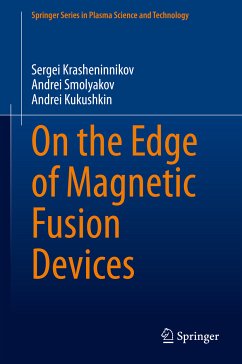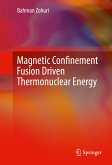This book reviews the current state of understanding concerning edge plasma, which bridges hot fusion plasma, with a temperature of roughly one million degrees Kelvin with plasma-facing materials, which have melting points of only a few thousand degrees Kelvin. In a fact, edge plasma is one of the keys to solution for harnessing fusion energy in magnetic fusion devices.
The physics governing the processes at work in the edge plasma involves classical and anomalous transport of multispecies plasma, neutral gas dynamics, atomic physics effects, radiation transport, plasma-material interactions, and even the transport of plasma species within the plasma-facing materials.
The book starts with simple physical models, then moves on to rigorous theoretical considerations and state-of-the-art simulation tools that are capable of capturing the most important features of the edge plasma phenomena. The authors compare the conclusions arising from the theoretical and computational analysis with the available experimental data. They also discuss the remaining gaps in their models and make projections for phenomena related to edge plasma in magnetic fusion reactors.
Dieser Download kann aus rechtlichen Gründen nur mit Rechnungsadresse in A, B, BG, CY, CZ, D, DK, EW, E, FIN, F, GR, HR, H, IRL, I, LT, L, LR, M, NL, PL, P, R, S, SLO, SK ausgeliefert werden.
Es gelten unsere Allgemeinen Geschäftsbedingungen: www.buecher.de/agb
Impressum
www.buecher.de ist ein Internetauftritt der buecher.de internetstores GmbH
Geschäftsführung: Monica Sawhney | Roland Kölbl | Günter Hilger
Sitz der Gesellschaft: Batheyer Straße 115 - 117, 58099 Hagen
Postanschrift: Bürgermeister-Wegele-Str. 12, 86167 Augsburg
Amtsgericht Hagen HRB 13257
Steuernummer: 321/5800/1497
USt-IdNr: DE450055826
Bitte wählen Sie Ihr Anliegen aus.
Rechnungen
Retourenschein anfordern
Bestellstatus
Storno









